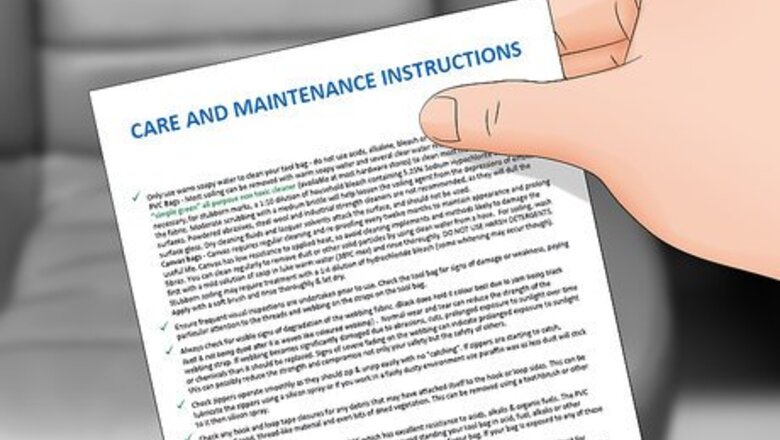
views
Adhering to Best Practices

Check your vinyl seats’ care and maintenance instructions. Every vinyl seat is a bit different from all the others. The care and maintenance guide provided by the manufacturer when you obtained your vinyl seating will provide special tips and tricks for cleaning that apply to your specific seat or set of seats. For instance, you might find recommendations or proscriptions for certain cleaning products and methods, or advice about how to tackle hard-to-clean areas of your vinyl seating.
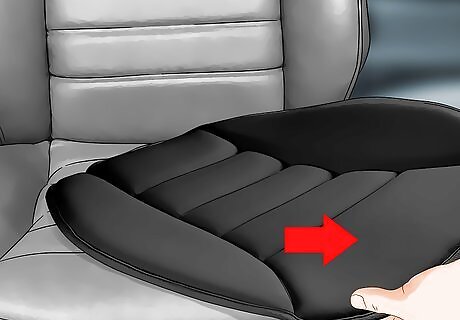
Remove the cushions. If your vinyl seat includes removable cushions, take them off before you start cleaning. Clean them separately from the main “base” of the seat. This will allow you to better clean the back and underside of the cushions, as well as the “base” upon which they sit.
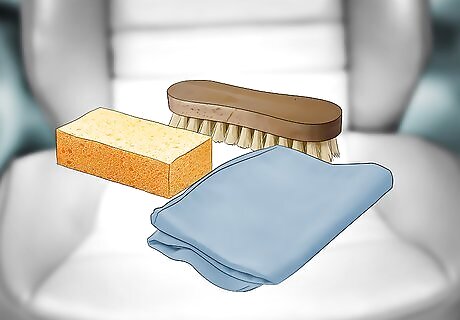
Use soft cleaning implements. Only clean your vinyl seats with soft sponges, dish cloths, and soft-bristled brushes. This will ensure your vinyl seats last for many years. Using steel wool, sharp cleaning tools, or similarly abrasive cleaning implements could cause your vinyl seating to tear.

Clean your vinyl seats with distilled water. Dip a sponge or cloth into distilled water. Wipe the seats down gently as needed. Then, dry them with another cloth or sponge afterwards. This will get your vinyl seats clean and dry. Distilled water is your safest bet.

Wash your seats with soapy water. If cleaning your vinyl seats with water didn’t do the trick, try again using soap and water. Mix a small amount of mild dish soap with warm water until the mixture is sudsy. Dip a soft-bristled brush in the water. Scrub the vinyl seats until clean. This might best be accomplished outdoors. If you can take your vinyl seats outside, use a hose to rinse them off. This will both keep your floors clean and enable you to enjoy the washing and rinsing process in the open air. Alternately, you might want to clean your vinyl seats in your tub, if they fit. If you cannot easily take your vinyl seats outside, rinse them with a damp cloth.

Do not use abrasive cleaning compounds. Vinyl seats are pretty tough – that’s why they are so widely used in boats, cars, and interior furniture. But vinyl can still be damaged. Undiluted bleach, for instance, is too caustic to use on vinyl. Over time, cleaning your vinyl seats with bleach will cause them to break down. Likewise, avoid cleaning compounds containing: concentrated detergents silicone oils waxes petroleum distillates dry cleaning fluids solvents acid-based cleaners
Cleaning Serious Stains

Use a specialized cleaner. While the exact technique necessary to clean vinyl seats varies depending on the product you’ve chosen to use, you can generally begin by wiping the seats down with a damp rag, then applying the vinyl cleaner to another clean, damp rag. After that, gently wipe the vinyl cleaning solution across the surface of the vinyl seats. There are a wide variety of vinyl cleaners available. Popular products include Rejuvenate Leather & Vinyl Cleaner and Marine Vinyl Coat.
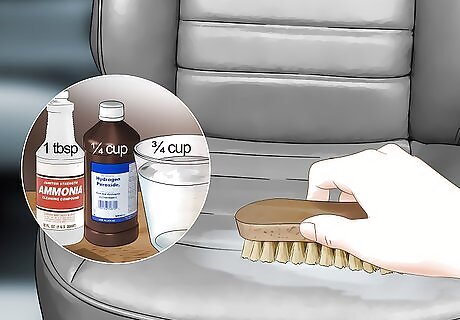
Use an ammonia mix. Mix one tablespoon of ammonia, ¼ cup (59 milliliters) of hydrogen peroxide, and ¾ cup (177 milliliters) of water. Scrub the vinyl seats with the mixture using a soft-bristled brush or sponge. Dry the vinyl seats by wiping them down with a dry cloth.
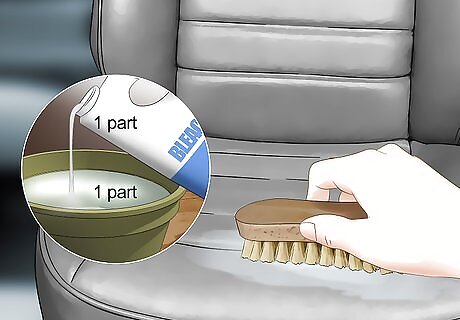
Clean your seats with a bleach mixture. Diluting bleach and water in a 1:1 ratio will yield an effective solution for cleaning vinyl seats. For instance, you might mix two tablespoons of bleach with two tablespoons of water. Dip a cloth, stiff-bristled brush, or sponge in the mixture. Scrub the vinyl seating down, then dry it thoroughly with a dry cloth. Before applying the bleach solution, test it on a hidden area – the bottom of a vinyl seat, for instance. Wipe it with a white paper towel, then check the paper towel to ensure no color comes off. If color comes off, do not use the bleach solution to clean your vinyl seats.
Caring for Your Vinyl Seats
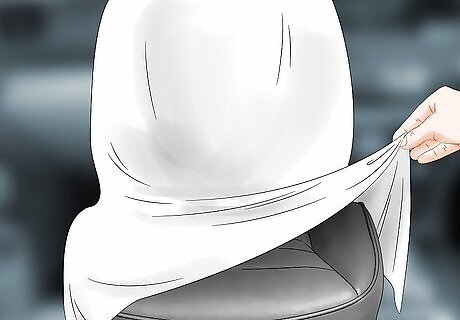
Cover your vinyl seats. If you know you won’t be using your vinyl seats for some time, cover them in a clean white cloth. This will prevent dust from settling on them, and from deterioration caused by the sun. Even when your vinyl seats are in regular use, you can buy comfortable cloth covers for them.
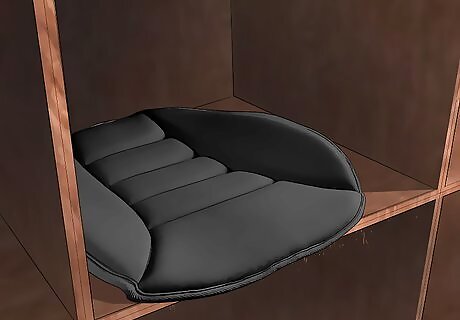
Store your vinyl cushions in a cool, dry room. To ensure your vinyl cushions don’t grow moldy, store them in a cool, dry room. Do not place your vinyl cushions in a damp basement or a humid attic (or a similar space).

Keep the vinyl seats out of direct sunlight. If vinyl seats are heated to an excessive temperature, the fabric adhesive that binds them may start to dissolve. This will cause your vinyl seats to crack. To prevent this, keep the seats out of direct sunlight. If your vinyl seats are in a car, park in a variety of parking spots to prevent the sun from always falling on the same spots. Also, crack your window or sunroof to keep the temperature down. Cover the vinyl seats with seat covers to prevent direct sunlight from striking them.

Clean your vinyl seats as soon as possible. If you spill something on your vinyl seats, or if you notice they’ve acquired stains or grime, clean them immediately. The longer a stain sits, the harder it will be to clean later.



















Comments
0 comment